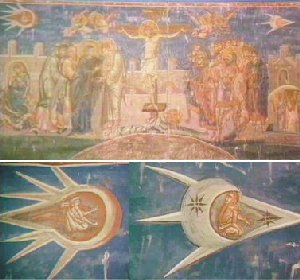In a prior article I have written Real Archaeology, I have explained the high relevance of the popular quote, “A picture is worth a thousand words” in the world of archaeology. In this article, on the contrary, I will introduce a different cliched quote that tarnishes archaeology and strays afar from the worldliness and truth of what the words seemingly perpetuates. I will also stress the importance of observation and objectivity, when theorizing about the universe we live in.

If the idea of Big Foot never existed, would any ever claim to have seen big foot at all and instead just shrug it off as just a giant bear?
“Seeing is believing” is a popular idiom that many of us preferably choose to follow when it comes to challenging our own skepticism. But how much trust and faith are we willing to put into the so-called “physical concrete evidence?” We must ask ourselves these questions first: how true is our perception? Do we see everything around us? Or do we only see the things we want to see? Kenneth Feder discredits this idiom by revealing the truth of the human form– that “people are poor observers”– in his book Frauds, Myths, and Mysteries (Feder 21). How much of what we see are actually from objectivity? Especially when it comes to interpreting artifacts made by the human past, how can we ever know what the original intentions of the artist were? Our preconceived ideas of today’s world already puts us at a disadvantage when it comes to relying on merely “seeing” to believe.

The “Ancient Astronaut Theory” as proposed by pseudoarcaheologist, Erich von Däniken, is a prime example of terrible observation and scientific integrity. According to Von Daniken, “evidences” from the past show astronaut-like beings or “ancient aliens” being here on earth long before our time. This not only sounds ridiculous, but by calling these figures “astronauts” we are mistakenly assuming that astronauts look all the same– circular glass helmets with thick body suits. According to Von Daniken, anything that looks like the description just mentioned, is unearthly and from outer space and therefore it adds to his beliefs in ancient aliens and our outer-space genetically engineered human origins. Also, he believes that aliens came down to  earth in space ships that look similar to modern day rockets and planes and therefore, old buildings that look like rockets are in fact evidence of alien visitors. Rendering past cultures as part of a pseudoarchaeological scheme of untested hypothetical past based on “seeing” alone is one the worst forms of scientific processes, and does not hold place in the scientific world. Eric Von Daniken is “seeing” only what he “wants to see.”
earth in space ships that look similar to modern day rockets and planes and therefore, old buildings that look like rockets are in fact evidence of alien visitors. Rendering past cultures as part of a pseudoarchaeological scheme of untested hypothetical past based on “seeing” alone is one the worst forms of scientific processes, and does not hold place in the scientific world. Eric Von Daniken is “seeing” only what he “wants to see.”

Take this FedEx logo for example, what do you see? Now look carefully, do you see the Arrow between the E and the X?
From my personal experiences in a day as an archaeologist, I’ve come to a conclusion that observation of what is needed comes naturally when the problem or the hypotheses that are being tested are in mind. As the team of five Vassarians ventured through the woods of the outskirts of Wappinger falls in hopes of discovering the last few remains of Olson Fowler’s long lost Octagon house, we have discovered long parallel stone walls throughout the area leading towards the supposed location of the house along Route 9. At first, the map showed nothing but green, but as we matched up the locations of these stone walls with the map, hints of darkened parallel lines were visible on the aerial map of the area. Evidence of roads were on the map all along! Now that we knew what we need, we were able to perceive things differently. How we view things shift drastically according to our needs and wants.
As Albert Einstein would put it, “No problem can be solved from the same level of consciousness that created it.” We need to completely be devoid of any prior personal biases when it comes to scientific and archaeological exploration. We must be ready to reject our own opinions and beliefs for the sake of discovering the raw truths of the universe.

 but that’s not what I’m getting at.Sherlock Holmes, will probably take a mental picture of what he is looking at, from every details, to the type of grass, the age of the tombstones, any patterns, the relative ethnographic distribution of the area in a bigger context and picture. He will map out every detail, every singularities, differences, and similarities of the position of the entire graveyard before even digging the site.
but that’s not what I’m getting at.Sherlock Holmes, will probably take a mental picture of what he is looking at, from every details, to the type of grass, the age of the tombstones, any patterns, the relative ethnographic distribution of the area in a bigger context and picture. He will map out every detail, every singularities, differences, and similarities of the position of the entire graveyard before even digging the site.

